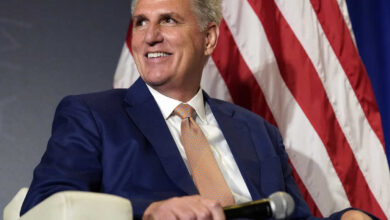Arch Manning Transfer: Impact on College Football

Introduction
Arch Manning, one of the most highly anticipated quarterbacks in recent college football history, has made headlines once again with his decision to transfer. Manning, who has been a focal point of recruitment discussions due to his impressive lineage and exceptional skills, is now at the center of one of the biggest transfer stories in college sports. This article delves into the key aspects of Arch Manning’s transfer, exploring the timeline, impacts, and future implications for both Manning and college football at large.
Manning, the nephew of NFL legends Peyton and Eli Manning, has garnered significant attention throughout his high school career for his remarkable performances and potential. His transfer decision, therefore, holds substantial weight in the college football landscape. As we explore the details of his transfer, we’ll examine the potential effects on his career trajectory, the implications for his new and former teams, and what this move means for the broader college football arena.
The Arch Manning Transfer: The Timeline
Arch Manning’s transfer has been a subject of speculation and excitement for months. The journey began with a series of high-profile recruitment phases, during which Manning’s skills and potential attracted attention from top college programs. Initially committed to his previous school, Manning’s decision to transfer came after careful consideration of his career goals and the opportunities available at other institutions.
The timeline of Manning’s transfer is marked by several key events. His recruitment started gaining traction in his sophomore year, with numerous offers from top-tier programs. By his junior year, Manning was already a sought-after prospect, and his commitment to his previous school was seen as a major coup for that program. However, in recent months, rumors began swirling about his dissatisfaction and the potential for a transfer. The official announcement of his transfer came as a surprise but also as a confirmation of the speculations that had been building up.
Media coverage of Manning’s transfer has been intense, with sports analysts and fans alike scrutinizing every detail of his decision. From press conferences to social media posts, the narrative has been driven by a combination of excitement, speculation, and anticipation about where Manning will end up next. The transfer has not only dominated headlines but also sparked discussions about the future of college football’s recruiting landscape.
Impact of the Transfer on Arch Manning’s Career
Arch Manning’s transfer is set to have a profound impact on his career as a quarterback. Moving to a new team brings both opportunities and challenges. On the one hand, Manning will benefit from new coaching staff, training facilities, and a potentially different playing style that could further hone his skills. The fresh environment could offer him new perspectives and strategies that might enhance his performance and development.
However, the transfer also presents several challenges. Manning will need to adapt to a new team dynamic, which includes learning new playbooks, building chemistry with new teammates, and adjusting to a different coaching philosophy. These changes can be demanding, but they also offer Manning a chance to showcase his adaptability and resilience. His ability to integrate into the new system and perform at a high level will be closely watched by scouts, coaches, and fans.
The new school’s expectations will also play a significant role in shaping Manning’s career. As a high-profile recruit, he will face immense pressure to deliver exceptional performances. Balancing these expectations with his own development goals will be crucial. Despite the potential hurdles, Manning’s transfer is a pivotal moment in his career that could set the stage for future success, both in college football and beyond.
The Transfer’s Influence on College Football
Arch Manning’s transfer is not just a significant event for the player himself but also for college football as a whole. The transfer has elicited strong reactions from the football community, including coaches, players, and analysts. Coaches from various programs have weighed in, offering their perspectives on how Manning’s move could impact their teams and the broader competitive landscape.
The media coverage surrounding Manning’s transfer has highlighted the shifting dynamics of college football recruiting. His decision to transfer has sparked discussions about the role of high-profile recruits and how their moves can influence team strategies and recruiting practices. Other teams will likely adjust their recruitment strategies in response to Manning’s transfer, potentially altering the competitive balance within the sport.
Moreover, the transfer has intensified existing rivalries and created new ones. As Manning prepares to join a new team, the anticipation surrounding his performances and matchups against his former school will add an extra layer of excitement to the season. This dynamic not only boosts interest in college football games but also affects the broader narrative of the sport.
Potential Destinations and Their Appeal
As Arch Manning’s transfer saga unfolds, several potential destinations have emerged as frontrunners for his next stop. Each of these schools offers unique advantages and challenges that could influence Manning’s decision. Analyzing these potential destinations provides insight into how they align with Manning’s skills and career goals.
One prominent contender is [Insert Potential School A], known for its strong quarterback development program and competitive environment. The school’s emphasis on offensive innovation and player development could offer Manning the opportunity to refine his skills and make an immediate impact. Additionally, the program’s track record of producing successful NFL quarterbacks might appeal to Manning’s long-term aspirations.
Another potential destination is [Insert Potential School B], which boasts a robust recruiting network and a reputation for fostering talent. The school’s facilities and coaching staff could provide Manning with the resources needed to excel. However, the transition to this program might come with its own set of challenges, including adapting to a different playbook and team culture.
Ultimately, the decision will hinge on various factors, including Manning’s personal preferences, the fit with the coaching staff, and the overall program’s alignment with his career goals. Expert opinions and predictions continue to speculate on where Manning might end up, but the final choice will reflect a combination of strategic considerations and personal inclinations.
Conclusion
Arch Manning’s transfer is a landmark event in the realm of college football, with far-reaching implications for his career and the sport itself. As Manning navigates this transition, he will encounter both opportunities and challenges that will shape his future success. The transfer’s impact extends beyond Manning, influencing team dynamics, recruiting practices, and the broader competitive landscape.
The excitement surrounding Manning’s next move underscores the significance of high-profile transfers in college sports. As fans and analysts eagerly await his decision, the anticipation continues to build, promising an intriguing chapter in Manning’s football journey. The transfer not only highlights Manning’s potential but also reflects the evolving nature of college football’s recruiting and competitive strategies.





